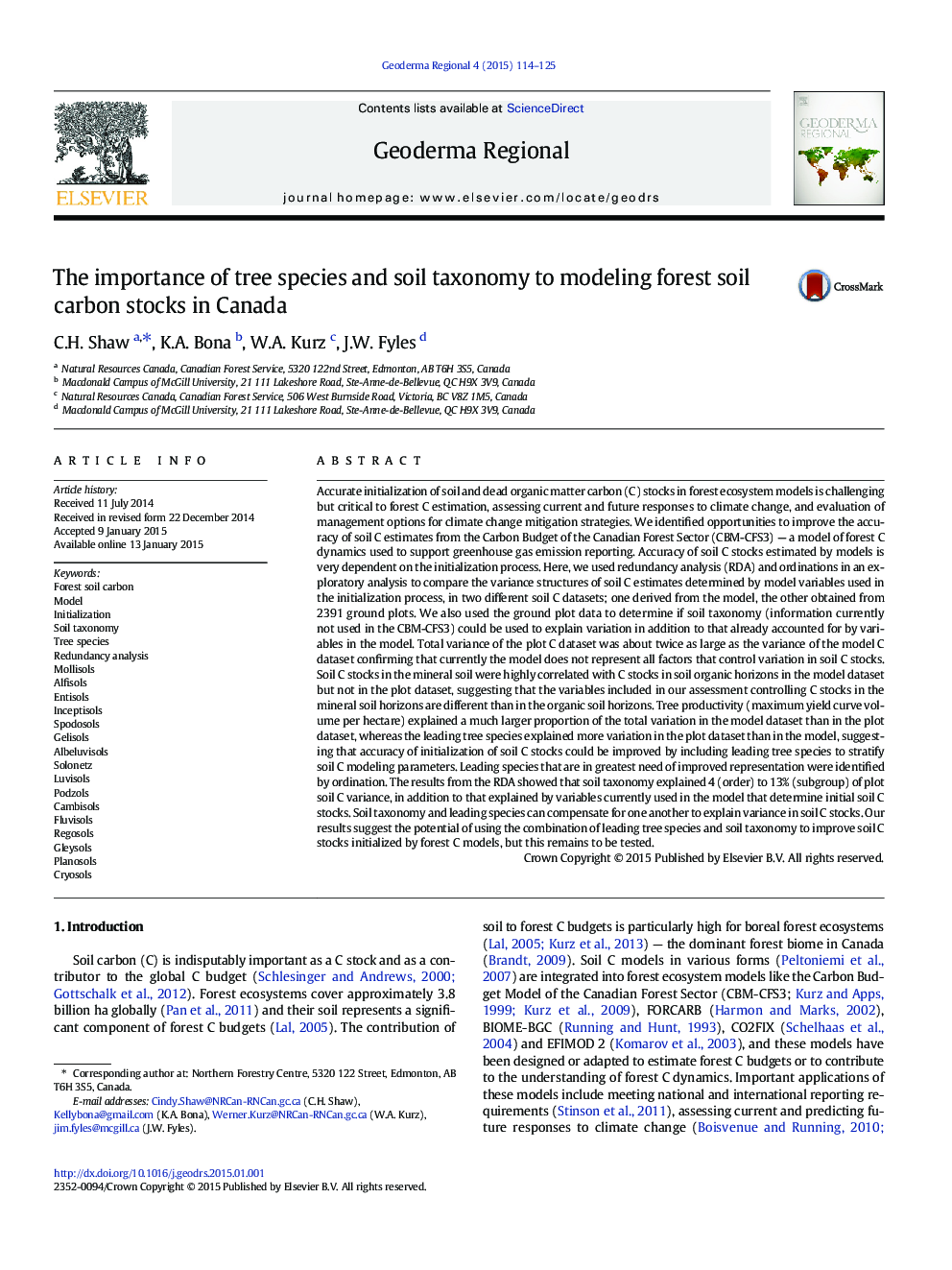| کد مقاله | کد نشریه | سال انتشار | مقاله انگلیسی | نسخه تمام متن |
|---|---|---|---|---|
| 4480797 | 1623011 | 2015 | 12 صفحه PDF | دانلود رایگان |
• Redundancy analysis is useful to identify opportunities to improve national-scale soil C estimates.
• Tree productivity explained the largest percentage of soil C variation in model predictions.
• Tree species explained the largest percentage of soil C variation in plot estimates.
• Soil taxonomy has potential to explain additional variation in modeled initial soil C stocks.
Accurate initialization of soil and dead organic matter carbon (C) stocks in forest ecosystem models is challenging but critical to forest C estimation, assessing current and future responses to climate change, and evaluation of management options for climate change mitigation strategies. We identified opportunities to improve the accuracy of soil C estimates from the Carbon Budget of the Canadian Forest Sector (CBM-CFS3) — a model of forest C dynamics used to support greenhouse gas emission reporting. Accuracy of soil C stocks estimated by models is very dependent on the initialization process. Here, we used redundancy analysis (RDA) and ordinations in an exploratory analysis to compare the variance structures of soil C estimates determined by model variables used in the initialization process, in two different soil C datasets; one derived from the model, the other obtained from 2391 ground plots. We also used the ground plot data to determine if soil taxonomy (information currently not used in the CBM-CFS3) could be used to explain variation in addition to that already accounted for by variables in the model. Total variance of the plot C dataset was about twice as large as the variance of the model C dataset confirming that currently the model does not represent all factors that control variation in soil C stocks. Soil C stocks in the mineral soil were highly correlated with C stocks in soil organic horizons in the model dataset but not in the plot dataset, suggesting that the variables included in our assessment controlling C stocks in the mineral soil horizons are different than in the organic soil horizons. Tree productivity (maximum yield curve volume per hectare) explained a much larger proportion of the total variation in the model dataset than in the plot dataset, whereas the leading tree species explained more variation in the plot dataset than in the model, suggesting that accuracy of initialization of soil C stocks could be improved by including leading tree species to stratify soil C modeling parameters. Leading species that are in greatest need of improved representation were identified by ordination. The results from the RDA showed that soil taxonomy explained 4 (order) to 13% (subgroup) of plot soil C variance, in addition to that explained by variables currently used in the model that determine initial soil C stocks. Soil taxonomy and leading species can compensate for one another to explain variance in soil C stocks. Our results suggest the potential of using the combination of leading tree species and soil taxonomy to improve soil C stocks initialized by forest C models, but this remains to be tested.
Journal: Geoderma Regional - Volume 4, April 2015, Pages 114–125
